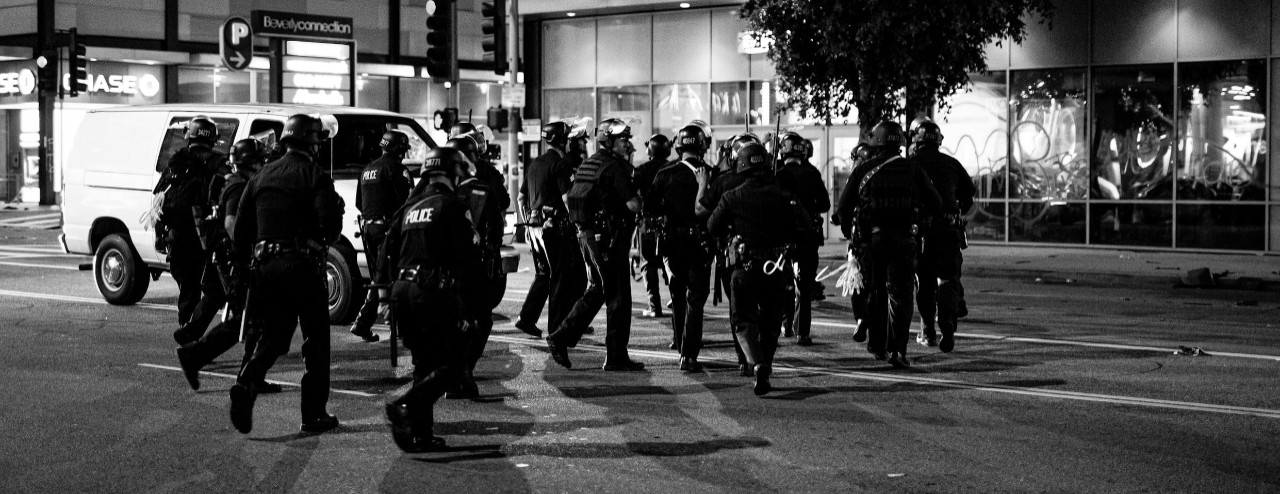
UC study on police militarizaton re-emerges
Nationwide protests after death of George Floyd sheds fresh light on police militarization study
A 2017 study about the militarization of police forces is getting picked up in major media outlets following nationwide protests following the death of George Floyd.
Law enforcement agencies that use military equipment kill citizens at significantly higher rates than agencies that don’t, according to a 2017 research study being highly cited in the wake of nationwide protests in response to the death of George Floyd.
The study is co-authored by Jack Mewhirter, an assistant professor of political science at the University of Cincinnati who states that agencies with increased military tools have higher rates of police-involved killings.
The study, Mewhirter says, was the first attempt to analyze whether and to what extent military transfers have increased the propensity by which law enforcement agencies cause “undue or unnecessary harm” and rules out that this link between militarization and violence is driven by increased crime.
You often use the tool that you have regardless of whether it’s useful or correct.”
Jack Mewhirter, assistant professor of political science at UC
“You often use the tool that you have regardless of whether it’s useful or correct,” Mewhirter says, citing that the study has been replicated by academics and so far, “the finding has held every time.”
“Since the program’s inception, we ‘ve witnessed a dramatic increase in the number of military items that have been transferred to law enforcement agencies,” and even more so since section 1033 of the 1997 National Defense Authorization Act authorized the Secretary of Defense to sell or transfer excess military equipment to local agencies, says Mewhirter.
According to the study, between 2006 and April of 2014, the Department of Defense transferred over $1.5 billion worth of equipment including over 600 mine-resistant ambush-protected vehicles, 79,288 assault rifles, 205 grenade launchers, 11,959 bayonets, 50 airplanes, 422 helicopters and $3.6 million worth of camouflage and other “deception equipment.”
Mewhirter's research expertise is in public policy, the emergence of societal problems and inefficiencies as well as the policy tools available to correct them. He also examines the organizations charged with the implementation of policies, the factors that impact organizational effectiveness and the evaluation of implemented policies.
Featured image at top: A police force responds to enforce curfew. photo/Donovan Valdivia/Unsplash/
Impact Lives Here
The University of Cincinnati is leading public urban universities into a new era of innovation and impact. Our faculty, staff and students are saving lives, changing outcomes and bending the future in our city's direction. Next Lives Here.
Related Stories
News Cincinnati loved in 2025
January 2, 2026
The story of prohibition bootlegger George Remus was among WLWT's favorite segments in 2025. UC Law Professor Christopher Bryant spoke with journalist Lindsay Stone about Remus using a temporary insanity defense during a murder trial.
What to know about this year’s big tax changes
January 2, 2026
Local 12 reported that taxpayers can expect some major changes this tax season. Gary Friedhoff, adjunct instructor at the University of Cincinnati’s Carl H. Lindner College of Business, recently spoke to Local 12 about how to avoid surprises.
Study finds police officers face higher long-term health risks
January 2, 2026
J.C. Barnes, a University of Cincinnati professor, is interviewed by Spectrum News about new research showing that the physical and psychological demands of law enforcement can contribute to earlier deaths.
